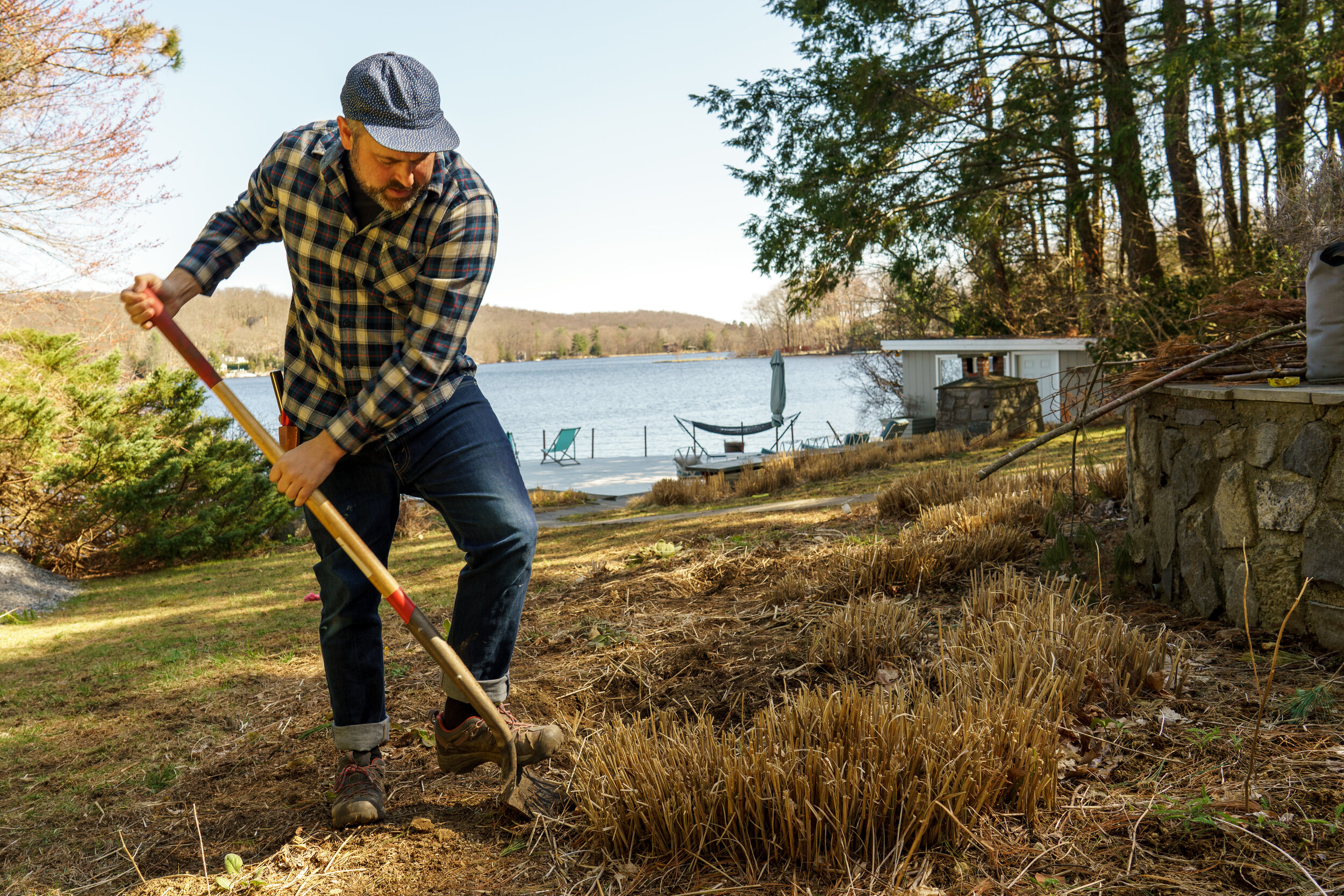Spring cleaning - Garden Edition
With David Seiter
Happy Spring!
Hello from the east side of the lake where we get bright morning sunshine and early afternoon shade . . . it’s garden clean up time!
I’m busy around our yard cutting back last year’s perennials and grasses, blowing out leaves, picking up downed branches from the winter storms and just generally tidying up the yard. Our lot is only about a 1/3 of an acre but it’s packed with holdovers from the late 80s era of planting design when it was desirable to introduce non-native plants species to your landscape. I’m sure you are all familiar with these exotics likes barberry, euonymus, japanese maple, miscanthus grass and pachysandra, amongst others. I’m slowly working on removing those non-natives species year by year and replacing them with plants more historically found in the Northeast.
I’ve got a ton of Miscanthus sinensis on my property - probably around 60 clumps of grass in total. While these are excellent landscape grasses that grow up to 8 ft high each year, they have become quite thuggish and too numerous over time. In New York State, they are a regulated invasive species and are prone to spread into our naturalized areas. Given that we are so close to Fahnestock, we have a real opportunity to improve our lake’s landscape with beautiful, low maintenance and resilient natives.
Here’s a list of a few plants I’ll be adding in place of the miscanthus.
Perennials
Echinacea purpurea, Eastern Coneflower
Aster novae angliae, New England Aster
Vernonia noveboracensis, New York Ironweed
Grasses
One great native shrub that you will see blooming this week around the lake, is Lindera benzoin - our native Northern Spicebush! It’s often found on the edges of wet areas around the lake, its form roughly 8-10 ft high and wide. You can distinguish it from the non-native forsythia shrub by its flowers – which are fuzzy and small and a softer shade of yellow.
Northern Spicebush
photos: Alex Harris
Any spring cleaning tips of your own? Send us an email at admin@rblpoa.com.







